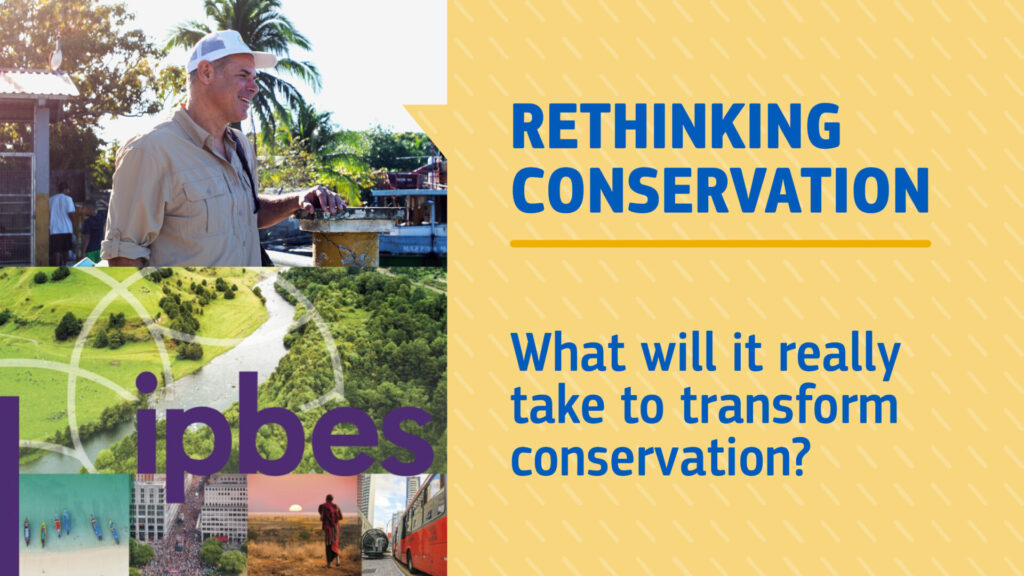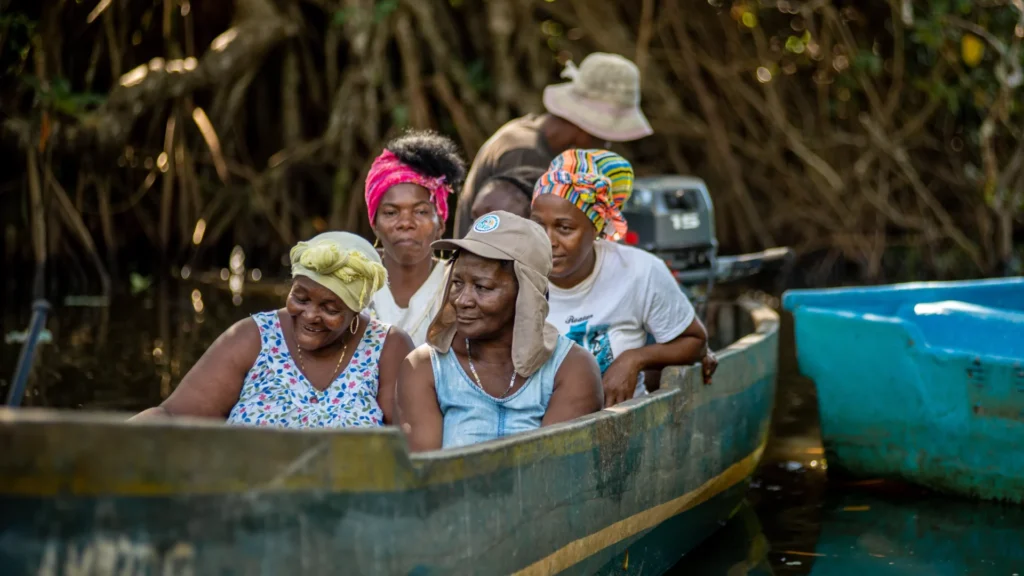
The following article is part of Rare’s Rethinking Conservation series, which builds on the need to view people as central to solving the biodiversity and climate crises. Through original content and discussion with forward-thinking experts, the series explores innovative strategies and collaborative solutions that empower communities, advance conservation, and redefine our relationship with nature.
Over the last month, I finally sat down to read the IPBES Transformative Change report from late 2024 (IPBES is the Intergovernmental Science-Policy Platform on Biodiversity and Ecosystem Services). As I read and digested it, two things struck me:
- It issues an urgent, unequivocal call for a fundamental shift in how we do conservation.
- Almost no one in the sector seems to be talking about it.
As someone working in this space, I couldn’t help but wonder – did others read it, and if so, what did you think? To me, the report is both a wake-up call and a rallying cry.
The big picture: five shifts we need now
For those who haven’t read it, here’s the essence. The report confirms what many of us have long felt: the status quo in conservation isn’t enough. Despite growing recognition of the crisis, biodiversity loss and nature’s decline are still accelerating.
To reverse this trend, the report calls for “fundamental, system-wide shifts in views, structures, and practices” across five critical areas:
- Indigenous-led stewardship – Those who have safeguarded nature for generations must lead.
- Transformation of productive systems – We must rethink how we manage fisheries, agriculture, and livestock.
- Integrating nature into financial systems – Embedding biodiversity into economic decision-making.
- Inclusive and integrated governance – Elevating equity and local leadership.
- Shifting cultural narratives – Changing social norms, worldviews, and values to embrace sustainability.
It’s a powerful diagnosis. But what’s missing is the how. How do we turn these five shifts into action? What tools, disciplines, or approaches can help us make this transformation real?
The missing link: behavioral science
One critical enabler the report overlooks — or at least underemphasizes — is the field of behavioral and social science.
At Rare, we’ve been exploring this question for decades: How can we change human behavior in durable, community-led, and scalable ways?
The answer often lies in the science of how humans think, feel, and relate to one another — as individuals and in social groups. If we want to transform systems — not just policies and incentives but also hearts, minds, and norms — behavioral science must move from the margins to the center of conservation strategy.

This is especially true for Indigenous and community-led approaches, which depend on trust, values, identity, and local social structures. Thus far, these efforts are undersupported by the tools that help people adopt new behaviors. Behavioral science can help unlock their full potential. Rare and a few others have pioneered this work, but much more potential remains.
While behavioral science has long been used in health, education, development, and public safety, it’s still underutilized in conservation. Too often, it’s introduced only after traditional approaches fail to deliver behavior change. If we want conservation to be led by communities and sustained by culture, then we must design with human behavior in mind from the start, not as an afterthought.
We can do better. And we must.
A culture shift requires a narrative change
Perhaps the boldest of the five IPBES strategies is the call to shift cultural narratives and norms. But that raises a critical question: How?
What drives changes in social norms, world views, and values? How can this change save biodiversity?
Behavioral and social science helps answer these questions and design for them. By more widely adopting behavioral science, we can more effectively activate and support IPLC’s voice and actions and redesign our production, finance, and governance systems toward the behaviors and actions needed for global sustainability and social benefit, not just profit.
Finally, we must reach far beyond the typical environmental audiences to save biodiversity. Social norms, worldviews, and values don’t shift in policy rooms alone. They’re shaped every day in our schools, places of worship, communities, and across media, from social platforms to popular entertainment. These are the spaces where culture evolves — where lasting change can take root.
So far, we’ve barely scratched the surface of what’s possible in these arenas. But the potential is great.
Looking ahead
As President of Rare, an organization powered by behavioral and social science, I see this moment as a profound challenge and a remarkable opportunity. We’re currently shaping our strategy for 2030 with a clear focus: to accelerate community-led conservation and resilience. But we’re also looking beyond the local — toward influencing the broader production, finance, and governance systems that shape environmental outcomes on a global scale.
And we believe our core capability — behavioral and social science — can spark the cultural shifts and narrative change IPBES calls for. We have piloted this approach with a Hollywood-based initiative to shift the climate narrative and culture in the United States. I’m intrigued by the potential of expanding this work globally — from K-Dramas to Nollywood — to inspire a more sustainable and equitable future through the stories we choose to tell — and who gets to say to them.
We certainly don’t have all the answers, but we believe behavioral and social science can unlock new ones and help conservation evolve into something more effective, equitable, and enduring.
Join the conversation
I’d love to hear from you if you have read the IPBES report or work in any of its five priority areas.
- What are you ‘rethinking’ in your work right now?
- Where do you see untapped potential?
- What insights, ideas, research, or provocations shape your work?